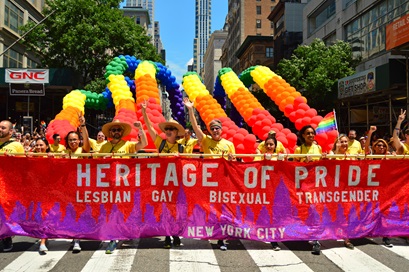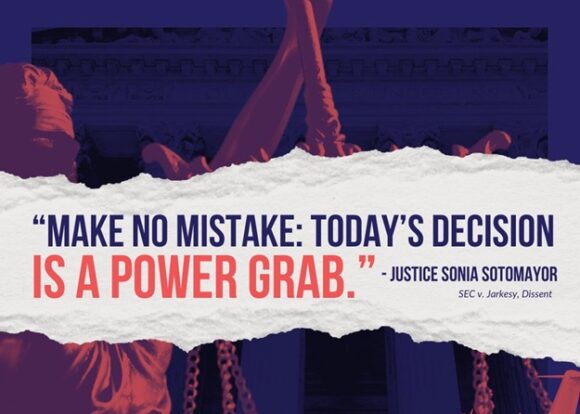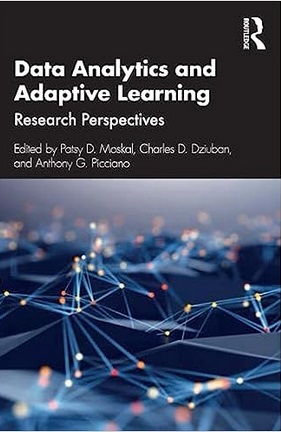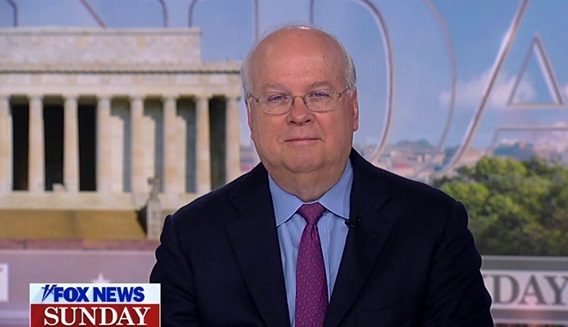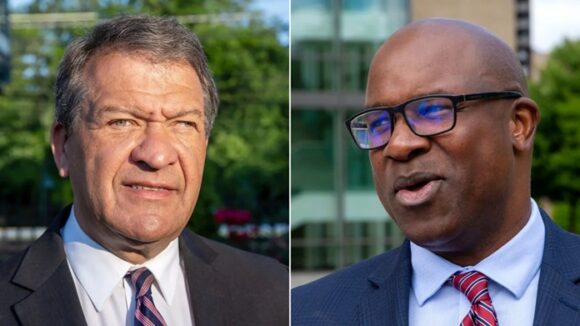 Justin Sullivan/Getty Images
Justin Sullivan/Getty Images
Dear Commons Community,
I watched the presidential debate last night between Joe Biden and Donald Trump. I took six pages of notes about what each candidate said. It doesn’t matter. Biden’s performance was sad and pathetic. His advisers should have never let him on the stage. He verbally stumbled and at times was incoherent. As a result, some Democrats are discussing the need for a new nominee after watching the “disaster” unfold. The New York Times reported that replacements including Governor Gavin Newsom were being implored to step in.
David Plouffe, who managed Barack Obama’s 2008 presidential campaign, told the CNN: “It’s kind of a Defcon 1 moment.”
David Axelrod, a strategist for Obama, said: “I think you’re going to hear discussions that I don’t know will lead to anything but there are going to be discussions about whether he should continue.”
The warning signs for Mr. Biden’s were there from the start of the night – from the moment he walked on stage, in fact.
The president looked nervous as he waited in the wings while he was introduced, before stiffly making his way across the stage.
“Folks, how are you?” he said, in a voice that was close to a mumble. As he took his spot, the President was barely audible as he said, hoarsely: “Great to be here, thank you.”
Mr. Axelrod said later in the evening that Biden appeared “disoriented” as soon as he stepped on stage.
During the 90-minute debate, Mr Biden spoke in a soft, raspy voice which at times made his answers hard to decipher.
As concern grew over the president’s performance, the White House began to brief out that he had a cold.
The debate in Atlanta, Georgia, opened with questions on the US economy, but Mr Biden repeatedly paused to correct himself as he confused millions and billions and percentage figures.
“What I’m going to do is fix the tax system. For example, we have a thousand trillionaires in America,” Mr. Biden said before clearing his throat. “I mean, a thousand billionaires.”
Mr. Biden also mixed up a 24 and 25 per cent rate of tax, then lost his train of thought and stared down at his notes.
He added that the tax raise would raise $500 million in a 10 year period, before correcting his statement to $500 billion.
In the debate’s most excruciating moment for the president, he lost his train of thought while discussing healthcare and tripped over his words before taking a protracted pause.
“We finally beat Medicare,” he began again, before a moderator cut him off.
His stumble was a gift for Trump, who accused Biden on the night of seeking to destroy the security net for senior citizens.
“He did beat Medicare,” Trump chimed in. “Beat it to death.”
When the debate hosts turned the discussion to immigration, Trump issued one of the most widely-shared put downs of the night.
In a stumbling answer on his border policies, in which Mr. Biden slurred some words, he said there were 40 per cent fewer people coming across the border illegally than when Trump left office.
“I’m going to continue to move it until we get the total ban on … the total initiative relative to what we’re going to do with more Border Patrol and more asylum officers,” Mr. Biden said.
Trump responded: “I really don’t know what he said at the end of that sentence. I don’t think he knows what he said either.”
Van Jones, a CNN pundit and former Obama adviser, called for Mr. Biden to step aside and said the debate was “painful” to watch.
“That was not what we needed from Joe Biden.”
It would be challenging for the Democratic Party to replace Mr Biden at this stage in the campaign, after he won the party’s primary essentially unchallenged earlier this year.
Incumbent presidents running for a second term are almost never defenestrated by their party at their party’s convention, where the formal decision to award a nomination takes place.
To replace Mr. Biden, the party would either require his consent, or for more than half of the state delegates who pledged support for him during the primary process to turn their backs on him.
If Mr. Biden agreed to step aside, then the party would choose a new nominee in an open process of voting on the convention floor in Chicago in late August.
A poll taken by CNN after the debate showed that 67 per cent of viewers thought Donald Trump had won, compared with 55 per cent who thought he would win before it started.
Excruciating painful to watch!
You can find a recap of the debate and what the candidates said below courtesy of The Associated Press.
Tony
———————————————————————————————–
Debate takeaways: Trump confident, even when wrong, Biden halting, even with facts on his side
SEUNG MIN KIM and NICHOLAS RICCARDI
June 28, 2024 at 12:27 AM
WASHINGTON (Associated Press) — Thursday’s presidential debate was a re-run that featured two candidates with a combined age of 159, but it went especially poorly for one of them, President Joe Biden.
Already fighting voter concerns about his age, Biden, 81, was halting and seemed to lose his train of thought, sparking quick concerns among Democrats about the man they hope will keep former President Donald Trump from returning to office. For his part, Trump made repeated false claims and provocative statements. But Trump seemed smoother and more vigorous than Biden, who is only three years older than the Republican ex-president.
The debate covered a wide range of topics and included a former president — Trump — not backing down from his vows to prosecute members of Congress and even the man he was debating. But the overarching theme was the difference between the candidates’ performance.
Here are some takeaways from the face-off.
Style v. Substance
Presidential debates are often scored on style and impression more than substance. Trump was confident and composed, even as he steamrolled facts on abortion and immigration with false assertions, conspicuous exaggerations and empty superlatives. Biden was often halting, his voice raspy, even when he had the facts on his side. He had difficulty finishing his arguments and marshalling his attacks.
Trump’s supporters have seemed unconcerned about his relationship with the truth, and his performance and delivery helped him. Biden’s supporters consistently express concern about the president’s age and capacity and he did little to reassure them.
One of the first glimpses viewers got of Biden was when he lost his train of thought while making his case on tax rates and the number of billionaires in America — trailing off and looking down at his lectern before mumbling briefly and saying “we finally beat Medicare.” When he tried to finish his point, he was cut off because of the time limits.
At other times, Biden made some puzzling non sequiturs that seemed to undercut what the campaign has said are his strong points, including the economy and abortion rights. As Biden critiqued Trump’s economic record, the president suddenly pivoted to Afghanistan and how Trump “didn’t do anything about that” — although the botched withdrawal of Afghanistan is widely considered one of the lowest points of Biden’s presidency.
Later, as Biden singled out state restrictions on abortion, he confusingly pivoted to immigration and referred to a “young woman who was just murdered” by an immigrant. It was unclear what point he was trying to make.
Jan. 6 and Trump’s revenge
Trump was cruising through the opening of the debate when he suddenly stumbled over the question of how he would reassure voters that he would respect his oath of office after the Jan. 6, 2021, attack on the U.S. Capitol.
He continued to engage in denialism about the attack and refused to denounced those who attacked police and stormed the building by breaking doors and windows. He suggested that those charged will somehow be found one day to be innocent.
More than 1,400 people have been charged with federal offenses stemming from the riot. Of those, more than 850 people have pleaded guilty to crimes, including seditious conspiracy and assaulting police officers. About 200 others have been convicted at trial.
Trump tried to avoid addressing the issue. He defended the people who stormed the Capitol, blaming Biden for prosecuting them. “What they’ve done to some people who are so innocent, you ought to be ashamed of yourself,” Trump told Biden.
Trump warned that the members of the congressional committee that investigated Jan. 6 could face criminal charges, as could Biden himself.
Biden shot back: “The only person on this stage who’s a convicted felon is the man I’m looking at.”
Trump didn’t back down from his vow to seek vengeance. Coupled with his refusal to condemn the Jan. 6 attackers, it made for a stark moment.
Asked if he would accept the results of the election, Trump said, “if it’s a fair and legal and good election, absolutely,” which notably is not an unqualified yes.
Low road
In what may well be a first in a presidential campaign, Trump called the president, Biden, a “criminal” and said he could well be prosecuted after he leaves office. Biden then brought Trump’s recent criminal trial in New York in which prosecutors presented evidence that Trump had sex with a porn actor. “I didn’t have sex with a porn star,” Trump said.
Trump’s vow on abortion
Abortion is an issue Democrats think could help deliver a victory in November. Trump in 2016 campaigned on overturning Roe v. Wade, and as president appointed three Supreme Court justices who provided the deciding votes revoking the 49-year right to the procedure. In response to a question from the moderators, Trump vowed not to go further if he returns to the White House, where his administration would have the authority to outlaw the abortion pill mifepristone, which is widely used.
Overturning Roe is one of Trump’s greatest political vulnerabilities, but on Thursday the former president contended everyone was happy with what he did.
“As far as abortion’s concerned it’s back to the states,” Trump said, contending the Founding Fathers would have been happy with the end of Roe. “Everybody wanted it brought back.”
That’s not true. Polls have shown significant opposition to overturning Roe and voters have punished Republicans in recent elections for it. “The idea that the founders wanted the politicians to be the ones making the decisions about women’s health is ridiculous,” Biden shot back.
In a unanimous decision this month, the Supreme Court preserved access to mifepristone, a pill that was used in nearly two-thirds of all abortions in the U.S. last year.
Until Thursday, Trump had not detailed his position on access to the medication, but during the debate he indicated he supported the justices’ decision, saying: “I will not block it.”
But when it was his turn to speak, Biden stumbled through his explanation of Roe, which he said “had three trimesters” — a lost opportunity for the Democrat to make a strong rhetorical case on an issue vital for his party.
“The first time is between a woman and a doctor,” Biden continued. “Second time is between a doctor and an extreme situation. A third time is between the doctor, I mean, between the women and the state.”
Border skirmish
In recent months, Biden has tried to reverse his poor public standing over his handling of immigration, first by endorsing a bipartisan Senate proposal with some of the toughest border restrictions in recent memory and then, after that legislation collapsed, taking executive action to clamp down on migrants seeking asylum at the southern border.
But as Biden tried to tout the progress he’s made, particularly the 40% drop in illegal border crossings since his border directive was implemented this month, Trump invoked his trademark dark and catastrophic rhetoric to paint a portrait of a chaotic border under Biden’s watch.
For example, Trump argued that the migrants arriving at the U.S. border are coming from “mental institutions” and “insane asylums” — a frequent refrain of his at rallies for which he has offered no evidence. He also claimed the U.S.-Mexico border is the “most dangerous place anywhere in the world” and cited examples of immigrants in the U.S. illegally who had committed violent crimes.
Though some immigrants do commit horrific crimes, a 2020 study published by the National Academy of Sciences found “considerably lower felony arrest rates” among people in the United States illegally than among legal immigrants or native-born. But Trump often benefits from his certitude.
It’s the economy, and Trump said Biden is stupid
The debate began with Biden defending his record on the economy, saying he inherited an economy that was “in a freefall” as it was battered by the pandemic and that his administration put it back together again.
But after Biden touted his administration’s accomplishments — such as lowering the cost of insulin and the creation of millions of new jobs — Trump boasted that he oversaw the “greatest economy in the history of our country” and defended his record on the pandemic.
Biden retorted: “He’s the only one who thinks that.” But Trump responding by attacking him on inflation, arguing that he inherited low rates of inflation when he came into office in January 2021 yet prices “blew up under his leadership.”
Suckers and losers
Biden — whose deceased son, Beau, served in Iraq — had one of his most forceful moments when he went on the attack against Trump’s reported comments in 2018 that he declined to visit a U.S. military cemetery in France because veterans buried there were “suckers” and “losers.”
It was an argument that Biden, then the Democratic challenger, made against Trump in their first 2020 debate and one that the incumbent president has regularly used against Trump, framing him as a commander in chief who nonetheless disparages veterans. “My son was not a loser, was not a sucker,” Biden said. “You’re the sucker. You’re the loser.”
Trump responded that the publication that initially reported this comments, The Atlantic, “was a third-rate magazine” and had made up the quotes. But undercutting Trump’s retort is the fact that his former chief of staff, John Kelly, confirmed those private remarks in a statement last fall.

